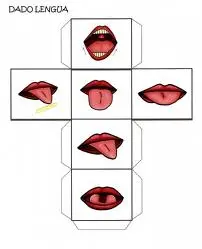Manner Of Articulation is recognized as interaction and connection of speech organs when producing the sounds. It can be anywhere from the lip at the front to the glottis (the gap between the vocal folds) in the back. The most common place of articulation is alveolar ridge directly behind the upper teeth.

Manner Of Articulation In Linguistics And Phonology
Bilabial
Consonant that occurs on both sides of the lips. (Lower lip pressed against the upper lip). In English bilabial consonant sounds are:
[P] Pat
[B] Bat
[M] Mat
[W] With
[] Where (only in some dialects)
Labia – Dental
These are the Consonants that occur on the lower lip and upper front teeth.
[F] Fat
[V] Vat
Inter-dental
These are the Consonants that occur in the tongue-tip and between the front teeth. In English, among others:
[] Thigh
[] Thy, they
Alveolar
These are the Consonants that occurs behind the upper front teeth. There are seven sounds in English that occur on or near the edge
[T] tab
[D] Dab
[S] Sip
[Z] Zip
[N] Noose
[L] Loose
[R] ed
Palatal
These are the Sounds that occur near the tougher parts of the palate or palatal
[S] leash
[Z] Measure
[C] Church
[] Judge
[Y] Yes
Velar
Part of the soft palate that occurs behind palate mouth are called velum. Sounds that occur near the velum called velar, among others:
[K] Kill
[G] Gill
[] Sing
Glottal
The space between the vocal folds is the glottis, in English, among others:
[H] High, history
Glottal stop [] a question mark without a point.
This happens before the vowel sound in uh – oh.
The system of sound in the eye of place of articulation:
The sound:
- The main energy source is the sound of their speech sound of air from the lungs.
- The air inhaled into the lungs and then exhaled out together while breathing.
- The air is exhaled (or inhaled to small Part of the sounds of language) challenged in various places talking tools in various ways, causing the sounds of language.
- Place or speech synthesizers that is passed among the trachea, the base of the throat, esophagus, oral cavity, nasal cavity.
- When air flows out ribbon flare a must in an open state.
- If the air does not have problems in speech synthesizers, sound language will not happen.
Linguistically You Must know About The Following list Manner Of Articulation.
- Lung (lungs)
- Trachea (trachea)
- The base of the throat (larynx)
- The ribbon voice (vocal cords)
- Cricoid (cricoid)
- Thyroid (thyroid / Adam’s apple)
- arytenoid (arythenoids)
- The wall cavity esophagus (wall of the pharynx)
- Epiglottis (epiglottis)
- The root of the tongue (root of the tongue)
- Backs tongue / base of the tongue (dorsum)
- Central tongue (medium)
- Leaves tongue (lamina)
- The tip of the tongue (apex)
- Children of the pharynx (uvula)
- Thesoft palate (velum)
- The ceilings are hard (palate)
- Gums in / niche gear (alveolae)
- The upper teeth (denta)
- Thelower teeth (denta)
- The upper lip (labia)
- The lower lip (labia)
- Mouth
- The oral cavity (oral cavity)
- Thenasal cavity (nasal cavity)
Cavities Pharynx Children (pharynx)
Child pharynx cavity exists between the larynx and oral cavity and nasal cavity.
The vocal cords (Vocal Cords)
The sound which is produced by the vocal cords is governed by arytenoids muscle system. Vocal cord attaches to the front of the thyroid cartilage.
The process of opening-his closing glottis
The glottis position will affect the pattern formation of the sounds of language. If the glottis opens position will produce unvoiced sound. Conversely, if the position of the glottis closes will produce voiced sound. Below we describe the position of the vocal cords when forming sounds.
The position of the vocal cords when breathing
When breathing, the vocal cords open wide so that air from the lungs through the throat there is nothing blocking. The position of the vocal cords like this generally produce vowel sounds, sound [ hp, t, sk ].
The position of the vocal cords vibrate
If the vocal cords vibrate, the top opened up a bit so as to form a [ b, d, g, m, r ]. If the vocal cords do not vibrate, will produce the sound [ p, t, c, k, f, h, s ].
The position of the vocal cords when whispering
The position of the vocal cords when whispered, closing slightly lower part, and the air discharge was reduced so that the sounds of the language are not clear hearing.
The ceiling Loud (palate)
Hard palate is an arrangement of bones. The front part of the ceiling started ka concave top, followed by the soft rear. Produce the sounds of language, hard palate become passive articulator. The active articulator is the tip of the tongue and the middle of the tongue. The sound produced by the hard palate called palatal sound, while the sound produced by the tongue-tip (apex) is called the sound of the apical. The sound produced by the middle of the tongue (medium) called the medial sound.
Gums (Alveolus)
Gum is a teething. Gums can be called leg area of teeth. In shaping the sound of the language, the tongue is the point of articulation, while the active articulator is the tip of the tongue. The sound produced by the gum called alveolar sound. In addition, the gums can together with aloe leaf (lamina) to form the sounds of language, thus producing sound luminal. Combined the two sounds are called sound-alveolar lamina.
The lips (labium)
Lips are divided into two parts, the upper lip and lower lip. When forming the sounds of language, upper lip serves as a passive articulator and lower lip becomes active articulator. The sound which is produced by the two lips is called bilabial sounds.
